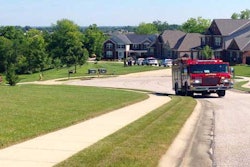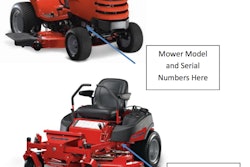 New children’s landscaping trends include free-form sandpits, which flow into other portions of the backyard.
New children’s landscaping trends include free-form sandpits, which flow into other portions of the backyard. Photo: Stout Design Build
Monkey bars and merry-go-rounds are no longer staple design elements when creating landscapes for children. The lines between play areas and other outdoor living spaces become increasingly blurred with the use of treehouses, free-form sandpits, shallow water features and other organic elements.
Some of the current trends in children’s landscaping include:
- Organic design elements like winding pathways, along with other natural elements such as boulders and tree stumps, are taking the place of square sandboxes and metal climbing structures. “Designs that lean toward the organic realm rather than the geometric tend to create more dynamic, interesting spaces, engage children for longer periods of time and encourage movement and exploration,” North Carolina State University Professor Robin Moore, who has researched the effects of nature on children’s behavior for more than 40 years, told Turf Design Build magazine. When providing shaded areas, consider things like arbors, shade sails, playhouses and other structures that can also serve as secret hideouts.
- Modern landscapes for children incorporate central community spaces like patios, fire pits or low decks. The play areas are located on the periphery, so grown-ups can relax in a comfortable, welcoming setting, while still keeping an eye on youngsters. This type of design is also easily changed as a family’s needs change.
- Not only is community part of children’s landscapes, but nature as well. By leaving some areas intentionally unmown and incorporating plants and wildflowers that attract insects like bees and butterflies, designers can create a mini ecosystem that children can be a part of.
- Features used in natural landscapes created for children often have dual purposes that benefit the environment. “A sandbox can also be used as a swale for water collection when it rains,” Tom Stout with Stout Design Build in Los Angeles, California, told Turf Design Build magazine . “We also did a below-grade trampoline that was in a 3-foot pit with gravel underneath. It satisfied ecological certification credits for water collection and was a fun play feature in the landscape. The other way we’ve gone is to make a swale into a pathway, with boulders sticking up as stepping stones.”









